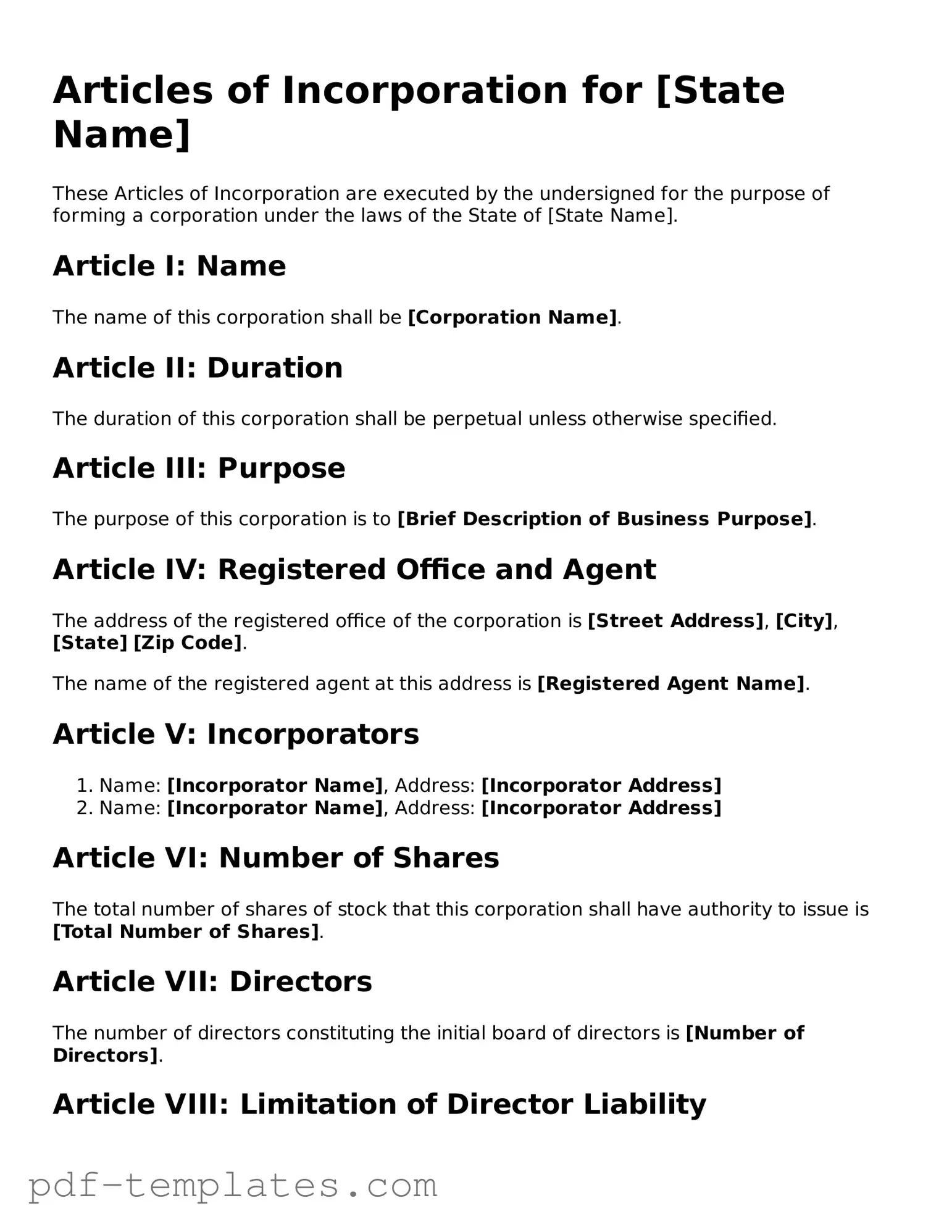The Articles of Incorporation serve as a foundational document for forming a corporation, but there are several other documents that share similarities in purpose and function. One such document is the Bylaws. Bylaws outline the internal rules and procedures for managing a corporation. While the Articles of Incorporation are filed with the state to officially create the corporation, Bylaws govern day-to-day operations, including the roles of officers and how meetings are conducted. Together, they establish both the legal identity and operational framework of the business.
Another related document is the Operating Agreement, particularly for Limited Liability Companies (LLCs). Similar to Bylaws, an Operating Agreement details the management structure and operational guidelines of the LLC. It specifies the rights and responsibilities of members, how profits are distributed, and procedures for adding or removing members. While the Articles of Incorporation are specific to corporations, the Operating Agreement serves a similar purpose for LLCs, ensuring clarity and structure.
The Certificate of Incorporation is closely aligned with the Articles of Incorporation. In some states, these terms are used interchangeably. This document is also filed with the state and includes essential information about the corporation, such as its name, address, and purpose. It essentially serves the same purpose as the Articles of Incorporation, confirming the legal existence of the corporation.
Meeting Minutes are another document that shares similarities with the Articles of Incorporation. While not a foundational document, Meeting Minutes serve to record the decisions made during corporate meetings. They ensure that the actions taken by the board of directors or shareholders are documented, providing a historical account of the corporation's governance. This documentation helps maintain transparency and accountability within the organization.
Shareholder Agreements are also relevant in this context. These agreements outline the rights and obligations of shareholders in a corporation. Similar to the Articles of Incorporation, which establish the corporation's framework, Shareholder Agreements provide additional clarity on how shares are managed, voting rights, and what happens if a shareholder wishes to sell their shares. They serve to protect the interests of all parties involved.
Another important document is the Business License. While the Articles of Incorporation create the corporation, a Business License is often required to legally operate within a specific jurisdiction. This document ensures that the business complies with local regulations and can engage in its intended activities. Both documents are essential for establishing and maintaining the legal status of a business.
For those looking to buy or sell recreational vehicles, it's important to have all necessary documentation in order to make the process seamless. A critical component in this transaction is the Texas RV Bill of Sale, which ensures the proper transfer of ownership. This legal document aids both the buyer and seller, providing essential details that clarify the transaction. To find a suitable form, you can visit documentonline.org/blank-texas-rv-bill-of-sale for more information and resources.
The Tax Identification Number (TIN) is also a crucial document for corporations. Similar to the Articles of Incorporation, obtaining a TIN is necessary for tax purposes. This number is used by the IRS to identify the business for tax reporting and compliance. Without it, a corporation cannot legally conduct business or file taxes, making it an essential component of the corporate framework.
Lastly, the Annual Report is another document that bears similarities to the Articles of Incorporation. Corporations are typically required to file Annual Reports with the state to maintain their good standing. These reports provide updated information about the corporation, such as its address, officers, and financial status. While the Articles of Incorporation establish the corporation, the Annual Report ensures that the state has current information, reinforcing the ongoing legitimacy of the business.
